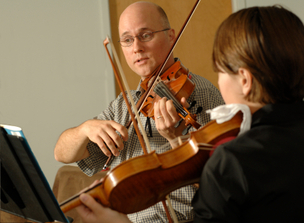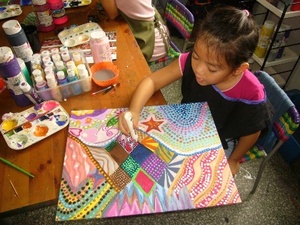Here’s a list of recent exhibitions, all mounted by the same museum:
- Thomas Gainsborough and the Modern Woman
- Starburst: Color Photography In America, 1970-1980
- Roaring Tigers, Leaping Carp: Decoding the Symbolic Language of Chinese Animal Painting
- Wedded Perfection: Two Centuries of Wedding Gowns
- Jeep, 1942
- Heavy Metal: Arms and Armor
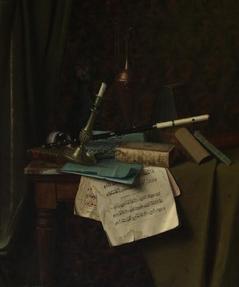 Which would you most like to see? Which was most educational? Most uplifting? Which most fit with the institution’s founding ambition to be the “Art Palace of the West,” to “bring a public art institution to life for the benefit of all citizens”?
Which would you most like to see? Which was most educational? Most uplifting? Which most fit with the institution’s founding ambition to be the “Art Palace of the West,” to “bring a public art institution to life for the benefit of all citizens”?
Finally, which do you think attracted the biggest audience?
Easy to answer that last one: More women than men go to museums, and more people are interested in clothes than in art. Wedded Perfection, which ran from Oct. 9 through Jan. 30, set an attendance record for the Cincinnati Art Museum, which is where these shows took place. 63,176 came to see it, exceeding a record set seven years ago when 62,203 people came to see Petra: Lost City of Stone.
Wedded Perfection displayed nearly 60 gowns from the late 1700s through modern times. Interestingly, along with the show, the museum “decided to give away a wedding,” according to a press release that is not posted online. “Local couples were invited to submit video applications, telling us why they should be chosen. After an overwhelming response, we narrowed the list to four finalists, and asked visitors to the Cincinnati Art Museum to vote for their favorite.”
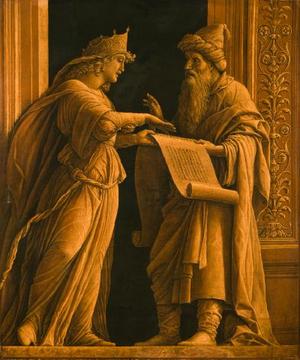 In a week when the National Endowment for the Arts redefined arts participation so that it looks as if more Americans are participating in ‘the arts,” none of this is surprising. Yes, museums are struggling to attract visitors in an entertainment-heavy world, but I can’t say I like that roster of exhibitions. Especially when you consider that a show called The Amazing American Circus Poster, opened on Saturday. Also on view, a micro car, contemporary Dutch design, a collection of contemporary art from the 21c Museum Hotel, which will open a branch in Cincinnati next year, and — at last — Force of Nature, which unites Barbizon paintings with contemporary Japanese ceramics.
In a week when the National Endowment for the Arts redefined arts participation so that it looks as if more Americans are participating in ‘the arts,” none of this is surprising. Yes, museums are struggling to attract visitors in an entertainment-heavy world, but I can’t say I like that roster of exhibitions. Especially when you consider that a show called The Amazing American Circus Poster, opened on Saturday. Also on view, a micro car, contemporary Dutch design, a collection of contemporary art from the 21c Museum Hotel, which will open a branch in Cincinnati next year, and — at last — Force of Nature, which unites Barbizon paintings with contemporary Japanese ceramics.
The Cincinnati museum is a wonderful museum located in a park that’s not really near anything — so that’s a drawback it struggles with. The museum recently expanded free parking, which costs $4, to those who buy more than $15 worth of something in the gift shop or spend more than $10 on food, etc. Admission is free.
But I wish it were better at attracting people to — yes, I’m saying it — real art. I’ve put a few things from its permanent collection here. William Harnett’s Last Rose of Summer and Mantegna’s A Sibyl and A Prophet.
It’s not that costumes and design are not art (I’m wary of those Jeeps and the micro car, however), it’s simply that the mix in Cincinnati seems unbalanced to me — too many “crowd-pleasing” shows, the equivalent of Musak or easy-listening music.
I’ve written about these trends before (here, here and here). From my point of view, there’s not much to celebrate when a wedding show with a contest sets attendance records. But it all depends on what your definition of art is…
Photo Credits: Courtesy of the Cincinnati Art Museum

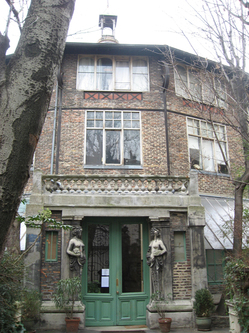
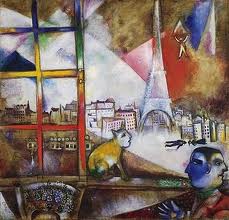 La Ruche had its own exhibition schedule, and Chagall, the museum says in its press release, once said, “In La Ruche, you either came out dead or famous.”
La Ruche had its own exhibition schedule, and Chagall, the museum says in its press release, once said, “In La Ruche, you either came out dead or famous.” 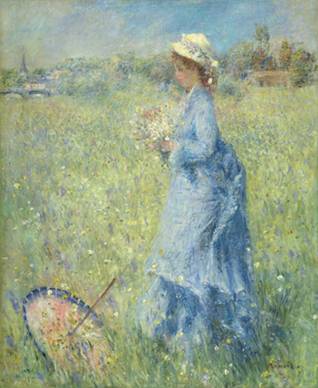 Proceeds, the release says, will be used to strengthen the Clark’s collection (in accordance with the policy of the Association of Art Museum Directors). No violation of the rules…
Proceeds, the release says, will be used to strengthen the Clark’s collection (in accordance with the policy of the Association of Art Museum Directors). No violation of the rules…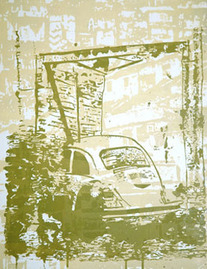
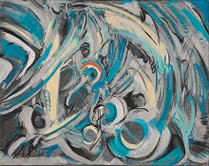 What’s the point? The museum says the show aims to “have you looking, thinking, talking, voting, and coming back to see the mysteries revealed.”
What’s the point? The museum says the show aims to “have you looking, thinking, talking, voting, and coming back to see the mysteries revealed.”